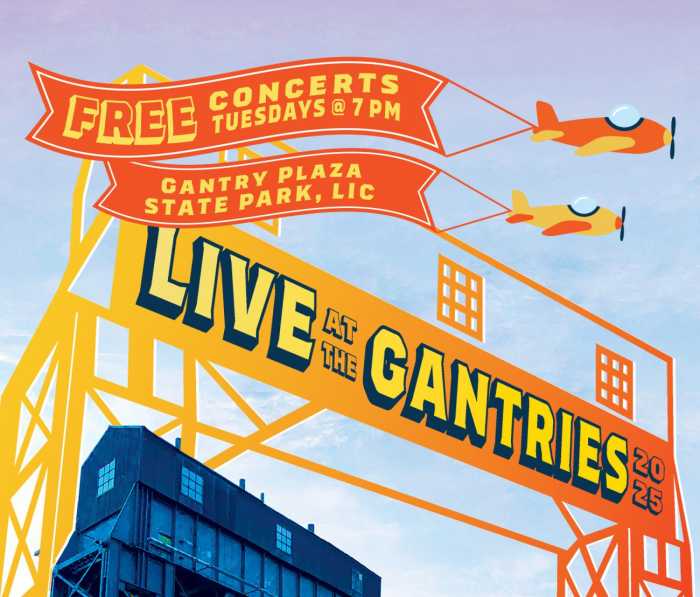
L train service was shuttered Sunday night after a power surge shut down the subway’s signal system (Wikimedia Commons)
Aug. 30, 2021 By Allie Griffin
Hundreds were evacuated from subway trains late Sunday night after a power surge shuttered service on half of the subway system.
About 550 New Yorkers who were on trains stuck between stations had to leave the train cars and trudge through subway tunnels after the signaling system went down on the 1, 2, 3, 4, 5, 6, 7 and L lines at around 9:10 p.m.
“Let me be very clear — last night was unacceptable,” Gov. Kathy Hochul said at a press conference Monday morning. “If you were one of those riders or people relying on safe transport, the system failed you.”
The system shutdown stemmed from a momentary power outage at 8:25 p.m. in which Con Edison lost a feeder and there was a voltage dip across New York City, Hochul said.
We are responding this evening to reports of a manhole fire in Long Island City, Queens. There was a brief transmission disturbance in that area. At this time, no customers have lost service as a result of the event.
— Con Edison (@ConEdison) August 30, 2021
The transmission disturbance happened at the same time that a manhole fire in Long Island City bellowed smoke above the horizon. The two incidents are not believed to be related at this point, Hochul said, adding that the state is still investigating the two events.
Explosion in LIC at ConEd. Saw a mushroom cloud of flames. #NYC pic.twitter.com/RO7R9GPF3Q
— Joe Esposito (@JWEsposito) August 30, 2021
The outage — which caused many New Yorkers’ lights to flicker for a split second, but didn’t lead to home outages — triggered the subways’ backup power system. When the subway system switched back to its normal system, there was a high surge of power that caused the subway to lose signalization and communication between command center and trains throughout the system.
The loss of communication and signals affected 83 trains — including five that were in between stations, Hochul said.
Straphangers on four of the five trains exited the subway cars and walked through tunnels to get to the next platform. The fifth train was replatformed.
“What we experienced was a lot of anxiety for the citizens of New York City who happened to be on the trains,” Hochul said. “This [was] a scary situation, something we don’t want New Yorkers to ever have to experience again.”
Service was restored on all lines by 1:30 a.m. after the FDNY checked that the tracks were clear of people who evacuated train cars.
Service has resumed on 1/2/3/4/5/6/L trains with extensive delays after a power surge disrupted the connection between the Rail Control Center and our signaling systems.
While delays continue, consider traveling on lettered lines or buses.https://t.co/jg4z62hGUt
— NYCT Subway. Wear a Mask. (@NYCTSubway) August 30, 2021
Two of the four trains stuck in tunnels were evacuated by emergency personnel, while passengers onboard the two others decided to leave the trains and walk the tracks on their own — which Hochul warned was dangerous and advised against.
Hochul said the situation was unprecedented.
“The confluence of events that led to this has never happened before to our knowledge,” she said.
Hochul and the MTA are conducting an investigation to learn the root cause of the system breakdown to avoid the issue going forward.
“I’m immediately directing a review to find out the root cause of the service issues last night…,” Hochul said. “I want to find out exactly what happened to prevent it from happening again.”
2 Comments







And yes will keep pushing new pet projects for scumbag politicians and crooked special interest groups. This type of engineering FAILURE is worthy of a multimillion dollar lawsuit.
Privatize, or sell operating rights to corporations. Look at Japan.
This is why it is a higher priority for the MTA & New York City Transit to reach a state of good repair for existing bus, subway and commuter rail fleet, stations, elevators, escalators, track, switches, signals, interlockings, communications, line structures, bridges, line equipment, tunnel lighting, pump rooms, traction power, power substations, yards, shops and supervisory vehicles All of the above should be fully funded before spending $6.9 billion on Second Avenue Subway Phase 2, $1.6 billion on Metro North Bronx East Penn Station Access or any other system expansion projects. Five million plus pre COVID-19 subway along with several hundred thousand Long Island and Metro North Rail Road riders first deserve safe and reliable service on the existing systems.
Larry Penner
(Larry Penner is a transportation advocate, historian and writer who previously worked for the Federal Transit Administration Region 2 NY Office. This included the review, approval and oversight for billions of dollars in grants to the MTA which funded LIRR, Metro North, NYC Transit, MTA Bus capital projects and programs).